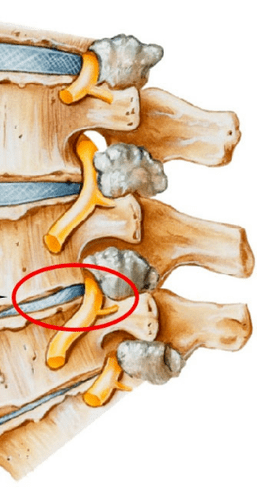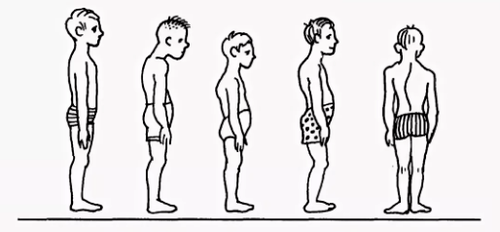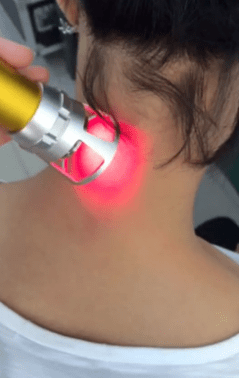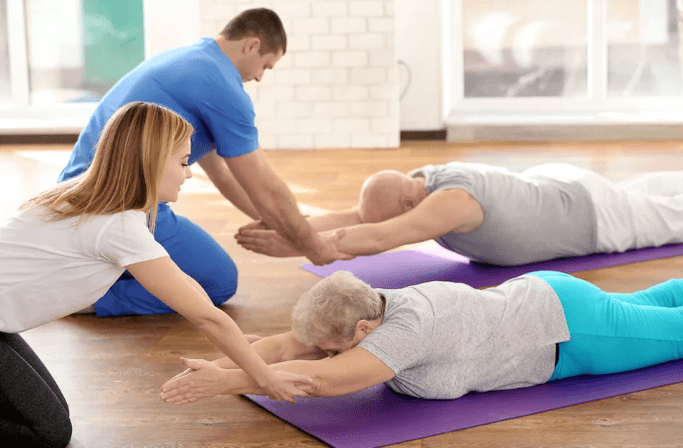Osteochondrosis is a chronic disease, stated in articular cartilage with dystrophic disorders. Most changes occur when the change occurs on intervertebral disks and intervertebral compounds, the spine is occurring. It differs depending on localization, cervical, thoracic and waist osteocondrosis. Osteocondrosis, which suffered all spinal parts, is often often. A pathological doctor requires an integrated approach to consultation and treatment.

Like other chronic diseases, the diseases of the spine quickly "rejuvenate". Previously, the pain and joints in the spine are worried about the elderly, and 18-30-year-old patients today are treating doctors.
Scientists consider a person a preliminary condition for the development of this disease, osteookondrosis is also facilitated with a long-term sitting position. In addition, age, articular cartilage loses elasticity and elasticity, delicate; Intervertebral disks lose moisture and shock absorption, they are sensitive during their physical effort.
The causes of cervical osteocondrosis are lying in cargo and affect the cervical region under various cases. Therefore, the muscles in the neck are intensively reduced, thus, as a result, it is compensated by a spasm, as well as breaches of blood flow in this area.
- Although the posture scolies, bends, round, kyphosis and other disorders of the mold and posture are insignificant, the spinal column is severely violated. As a result, the load on intervertebral disks is unequally distributed, which provokes their deformation and growing dress. Vertebra begins to approach, causes violation of nervous processes, cervical osteocondrosis is developing quite quickly. Similar results, there are posture violations resulting in a change in the natural state of ribs.
- Muscle spasms can cause spasmodic reactions of the back, nipple, press muscles, the individual parts of the body are very tense. As a result, the general balance sheet of the body causes a change in the position of the spine. Deformations can affect other parts of the cervical region or spinal column, causing the chest, cervical and osteocondrosis of waist parts.
- Violation of blood supply, the vertebrate has nothing to do with blood circulation system, feeding the surrounding tissues. The violation of the cervical spine is a violation of the blood supply, not sufficient fluid for rehydration of discs (restoration due to wet absorption) and cartilage tissue. As a result, their wear accelerates, causing osteocondrosis in the distances between the spine of the cervical region.
- Innervational violation causes pathological changes in the structure of the sensitivity of nerve roots, resulting in helmets and deformation of the cervical region. After all, there is no pain due to disorders of sensitivity.
- Diseases of the internal organs are the wrong position of the internal organs, reducing their displacement and various dysfunctions causes a general balance in the body. As a result, it has a sharp impact on the position of the spinal column - the cervical, pawnshop is deformed and deformed, leading to the relevant type of osteocondrosis.

In general, the osteocondrosis of the cervical region is developing due to the effects of negative external factors that violate the position of natural equilibros of the spine and other human body systems.
The diagnosis of cervical osteocondrosis begins with the collection of all the necessary information about the patient. The specialist asks for the complaints that worries people, and how he spends his professional activities, as well as the weekend. An important point is the presence, grandparents of osteocondrosis in parents, because it is hereditary natural disease.
Then the doctor comes directly to the patient's visual examination. He loves the cervical unit and the curvature of the posture, the cervical region. This allows a specialist to assess the development rate of the disease, because in the advanced cases, the palpation of the cervical region causes a sharp pain.
You should pay attention when examining:
- In the severity of cervical lordosis;
- the height of shoulders in the patient;
- probability of asymmetry of supraclock areas;
- Having the neck asymmetry (eg result of congenital pathology or sharp muscle spasm);
- the condition of the muscles of the shoulder zone and upper limbs (eg one-way muscle atrophy cervical spinal cervical spine will be compressed);
- The location of the jaw is normal along the normal line of the jaw;
- The neck movement (flashing, right and rotation and rotation and rotation).
The palpation is carried out in the initial position of the patient:
- stretching behind;
- stretches in the stomach;
- Sitting in a chair.
The study of the volume of actions is also being implemented. The patient sitting in a chair is carried out in the initial position (to correct the other waist).
Distinguish the following key actions in the cervical region:
- flexion;
- extension;
- Slopes to the right and left;
- Rotation.

About half of the flexion and extension occurs between the back of the head, C1 and C2's vertebres. The rest of the movement is carried out with large-scale movements in C5-C7 vertebrae due to basic vertebres. Side fruits are distributed evenly between all vertebraes.
Additional studies are assigned to make a proper diagnosis:
- X-cervical region. This method is in the early stages of the disease, but developed forms can be useless.
- CT (computer tomography). It allows you to see the structural changes in Vertabra, but with the help of this method, it is impossible to determine the size of the tear between the spines.
- Mri. The diagnosis of cervical osteocondrosis is the most effective way. You can determine the size of the torns between the disks, as well as the degree of development.
- The doctor can also determine a duplex scan that allows you to determine the violation of normal blood circulation.
The treatment of cervical osteocondrosis is a complex therapy, which includes medications, gels, as well as various physiotherapy measures. Play an important role with therapeutic gymnastics, as well as the massage of the problem area.
It is impossible to eliminate the results of the degenerative-dystrophic changes in the waist without use. Medicinal use in the treatment of osteocondrosis of the cervical region is one of the main points of a complex approach to healing used by traditional medical professionals.
It was designed to solve several problems, including:
- Stop the symptom of pain and eliminate the inflammatory process;
- Remove muscle spasms;
- Stimulate the process of restoring cartilage and bone texture cells;
- Strengthen the protective properties of the body, increase immunity;
- Improve the overall status by eliminating other symptoms that intervene in recovery.
Depending on these goals, all medications identified by a doctor suffering from cervical osteocondrosis are conditionally divided into the following groups:
- Analgesics (non-antique drugs eliminating the pain).
- The anti-inflammatory (steroid) relieves inflammatory events and thereby hormonal drugs that eliminate pain.
- Chondroprotants, components of cartilage tissue - are substances containing chondroitin, hyaluronic acid.
- Musorelaxants. These are drugs that relieve muscle tone. Surgery and orthopedia are used as auxiliary tools to stop pain. Such drugs are controlled by the parentel and therefore always under the control of the doctor.
- Vitamins. Vitamins with osteocondrosis of the cervical region is a determined, impact on the peripheral nervous system and improving the conductivity. Water-production vitamins: B1, B6, B12, B12, Oil -Soluble vitamins: A, C, D, E. In recent years, both painkillers and vitamin components are more often more often.
- Ointment and gels for external use.

The main purpose of physiotherapy treatment is to stimulate the restoration process in the body and eliminate the pain. The most popular methods in the treatment of cervical chondrosis are as follows:
- Ultrasound. The psychic, which has ultrasonic waves, is used to react to serious pain manifestations and inflammatory reaction. Ultrasound massages the neck texture after the activation of metabolism.
- Vibration massage. During the vibrating massage, the impact on the field of pain is through mechanical salliating movements. This is usually used in a strip of vibroru to carry out the right physiotherapy.
- Electrophorehez. This method of physiotherapeic care for cervical osteochondrosis is carried out using Diadynamic and modulated currents, as well as electricity, when the body is taken to the tissues of the body. Electrophorezz perfectly relieves spasmodic syndromes and eliminates pain in inflammatory muscles.
- Magnetotherapy. The essence of magnetotherapy as the essiotization of the cervical region is the essence of magnetotherapy, a magnetic, which is a magnetic field, is explained by the use of stable or variables. This method can help the patient to overcome the pain and stop the inflammatory process in the hearth. The procedure is often taken at home after obtaining a special magnetography device.
- Dutozor-therapy. Currently, a very popular physiotherapy method consisting of extending the spinal column under the body of the patient's body. It is necessary to implement such a procedure in a special mattress, which is tending to ribs and changes the place due to its own body. Muscle tone is normalized to cause recreation.
- Laser therapy. The laser affects the focus of inflammation in the focus of inflammation, activates biological processes in the tissues of the nervous system. This allows you to have a positive impact on treatment. The complex impact on the body is in antiinflamation, analgesic and wound healing effect. A laser treatment procedure should not exceed 15 minutes. This is the optimal time of the sectoral exposure of the Verici-neon laser in the affected areas. In this case, the laser's life should not exceed 2 minutes.
- Balneotherapy. The benefits of mineral water have been recognized for a long time, which is based on balnovotherapy. The procedure envisages the active use of water resources in the treatment of osteocondrosis. In addition to the adoption of the baths, various types of swimming and active swimming in the pool cover the application of therapy media applications to painful areas. The therapeutic effect is obtained with the same effect of chemical assets in water in different temperatures. The technique allows you to stop pain syndrome by improving the local microcirculency in tissues.

It is necessary to remember that exertion therapy is not carried out when the signs of exerbation begin: pain. After the LFC complex, they can strengthen and cause anxiety.
There are a number of common recommendations for charging:
- Good ventilation of physical education should be in a closed position with a great choice on the street.
- Classes are made only during the disease remission (in the absence of symptoms).
- Clothing in exercise therapy is expected to be wide, embarrassing actions and breathing.
- All actions are smooth, amplitude and the number of repetitions is gradually increasing.
- If the pain begins, you should immediately stop the lesson.
- Before classes and finishes pressure and pulse measurements. When these indicators differ from normal, the load must be reduced.
- It is recommended to listen to your breath throughout the lesson, it will increase the efficiency. All stretching exercises are carried on exhalation.
- It is very important to gradually increase the load and increase the number of repetitions, it will reduce the risk of injuries and prevents overhaul.
- Exercises are important to perform regularly, so you can get a quick result.
- You must agree to a doctor before starting independent classes and agree with the collection of exercises with him.

Recommended exercises in the starting position of the stomach:
- The head is parallel with the hands behind the head, the hands behind the head. Lift your head from your hand, this position is 4 account, down and relax. Repeat 2-4 times.
- On the head of the chin, under the chin stands on the palm. In the time of time, your arms forward, two side, to the two side, three side, three forward, four, four - start position. Repeat 2-4 times.
- Hands lay forward. Swimming the style of the "rabbit", repeated 4-8 times.
- The palm of the chin, emphasis on the palm of your forehead. Alternatively, remove the heel of the hip. Repeat 4-8 times.
Recommended exercises (right, then left):
- The right hand is extended, lift the right ear, lift the right hand with your head, position 4 account, down and relax. Repeat 2-4 times.
- The left hand sits on the floor in front of the chest, the left leg, fast movements back and forth. Repeat 6-8 times.
- Along the body, along the body, up and zoom in the left hand, lifts down, down. Repeat 2-4 times.
- The left hand in the thigh. Both knees to chest to chest, make your feet inspired. Repeat offers 2-4 times.

























